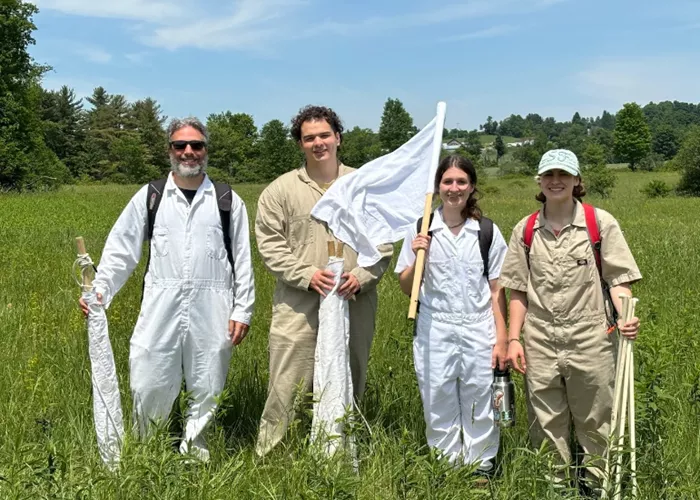As the blacklegged tick season peaks in much of the eastern U.S. during October and November, researchers are turning their attention to how invasive plants may influence the spread of tick-borne diseases, including Lyme disease and Babesiosis.
For years, scientists have observed that blacklegged ticks, also known as deer ticks, tend to thrive in areas dominated by invasive plant species, such as Japanese barberry. These plants create dense thickets in the forest understory, which appear to provide ideal conditions for ticks to flourish.
Now, a team of researchers from Vermont and Maine, backed by a $1.8 million grant from the National Science Foundation, is investigating how managing these invasive plants might reduce the number of ticks and, by extension, the risk of tick-borne illnesses. Their goal is to develop practical advice for landowners on how to manage both invasive species and tick populations.
Over the next five years, Dr. Allie Gardner, a medical entomologist at the University of Maine, and her team will survey tick populations and experiment with different land management strategies across 30 private and public sites in northern New England. The researchers plan to share their findings with landowners and provide training on best practices for controlling ticks and invasive plants.
“We can conduct all the research we want, but without translating those findings into actionable recommendations, we won’t make real progress,” said Dr. Gardner, who leads the project.
While the reasons for the increased presence of ticks on certain invasive plants remain unclear, experts have proposed several theories. Dr. Kristen Ross, a restoration ecologist at Vermont State University, suggests that Japanese barberry’s humidity levels are particularly favorable for ticks. “It’s neither too wet nor too dry, which seems ideal for them,” she explained.
Moreover, the dense thickets of barberry offer shelter for white-footed mice, a primary host for blacklegged ticks. These thickets make it difficult for natural predators of mice to access them, further contributing to the ticks’ abundance in these areas.
Dr. Gardner believes that other common invasive plants, such as honeysuckle and buckthorn, could also harbor higher numbers of ticks. However, she notes that this aspect of the problem has yet to be fully explored.
Other experts, like Dr. Thomas Mather, a tick ecologist at the University of Rhode Island, caution against oversimplifying the link between invasive plants and ticks. “You can find plenty of places with native plants that also have a lot of ticks,” Mather said, expressing skepticism about the extent of the connection between invasive species like barberry and tick populations. He also emphasized that removing invasive species alone will not eliminate ticks entirely.
Dr. Bill Landesman, a tick ecologist at Vermont State University and collaborator on the study, raised concerns about how much invasive plant removal would be needed to see a noticeable reduction in tick numbers. He suggested that other measures, such as tick checks or the use of insecticides, could be more effective in managing the risk of disease.
Despite these challenges, Dr. Gardner remains hopeful that the research will help raise awareness about the potential relationship between invasive plants and ticks, offering landowners one more reason to manage invasive species on their property.
“We’re looking for solutions that benefit both the environment and public health,” she said. “If people are already concerned about invasive plants and ticks, this research might provide a new incentive to take action.”
Related topics:
- How I Got My Orchid to Bloom More Than Ever in Just 4 Months with an Easy Growing Technique
- Plant Favorites Shine Through at Louisiana State Trials Despite Challenging Conditions
- ReLeaf Cedar Rapids Plants 3,000 Trees This Fall, Bringing This Year’s Total to 11,000


